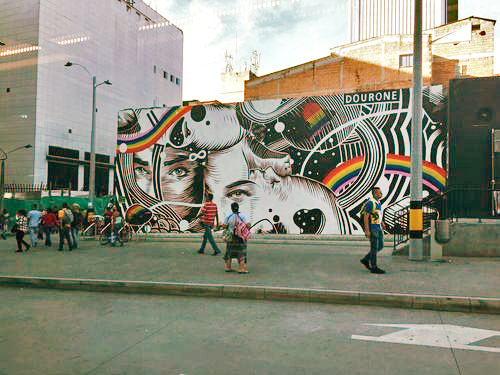How smart urban planning gave Medellín a facelift
A generation ago, Medellín, Colombia was one of most violent cities in the world. Now, it’s a true gem for urban planners. I was born in Medellín, was raised in Montgomery County and then moved back, and I recently returned to the DC area. The pictures from my last visit home help show how Medellín has changed since I first lived there.
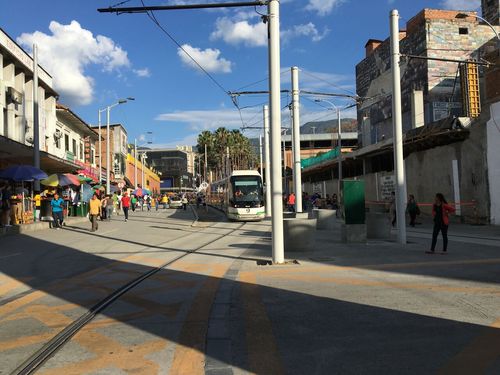
Medellín’s tram line in the San Antonio sector of downtown. All photos by the author.
Most of the positive attention that has gone Medellín’s way in recent years has stemmed from the impact generated by Social Urbanism, a concept where the people living in Medellín, a city of extreme inequality, gained a heightened sense of inclusion and engagement through high-profile infrastructure and transportation projects.
Efforts to use urban planning to create social inclusion and engagement led to Medellín’s Metro system (it’s Colombia’s only city with an urban train system), the Metrocable gondolas, library parks and sports infrastructure in some of the city’s most forgotten neighborhoods, and other social programs, such as universal head-start programs.

Walking path below the Metro line in the Estadio neighborhood.
I recently travelled back to Medellín for a few days, where I snapped a few pictures of new developments in transportation and urban planning that made me proud of my city and my people.

Between the pool and the soccer stadium at the Atanasio Girardot sports complex.
Medellín has rail, a streetcar, buses, and a gondola
Medellín has a public Metro system that’s made up of two train lines that run perpendicular to one another, along the central parts of the Aburra valley. The Metro is fed by a BRT system, a network of small bus routes, and MetroCable, the renown gondola system that has two lines that shoot up into the mountain sides of the valley and serve some of the most impoverished neighborhoods of the city. One of the gondolas even extends out of the valley to connect with one of the regional parks, which is outside of city limits.
I should mention that the biggest mode of transportation for Medellín’s working class continues to be the private bus system, which the city government is currently phasing out to make way for the publicly-managed and environmentally-friendlier network of Metro buses, trains, and gondolas.

Another Medellin sunset waiting for the Metro on the B line.

Rush hour on the Metro.
Medellín also just opened a new electric tram, a revival of the one that ran in Medellín during the 20s and 30s. Once cars became popular near the middle of the century, interest in maintaining the tram waned. But the new tram is giving parts of downtown a Medellín a facelift, cutting commute times for many residents in the eastern part of the city.

Old-school vs. new-school: Tram models from 1920s and today.
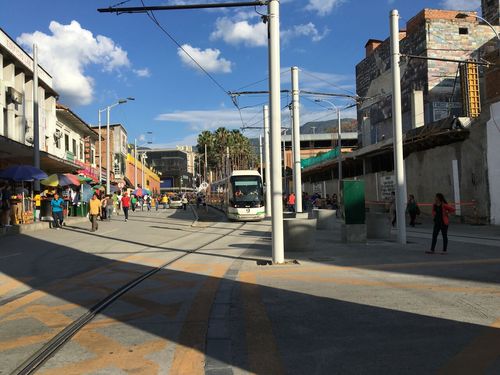
The tram opened at the end of 2015 to a lot of fanfare, and while it was not quite operating at full capacity while I was there, as of mid-March it was running during the whole day. Here’s the downtown station, which also was not finished during my visit:

The gondolas connect the Metro’s B line to social housing projects which have been built on a massive scale in the outskirts of town. These projects have been a source of controversy due to the quality of construction and the way which people have been relocated from other risk zones in the city into these buildings.
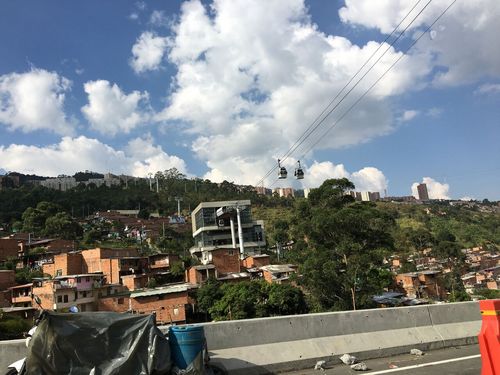
Vallejuelos Metrocable station in western Medellín.
Medellín also has a free public bike share program, which has been approved for massive expansion in the city’s most recent master plan.
This bike station serves sports facilities in Belen, a large neighborhood in western Medellín. It is a 15 minute ride away from the closest Metro station but only one block away from the closest station in the MetroPlus, a BRT-system that aims to fill the Metro’s service gaps around the city.
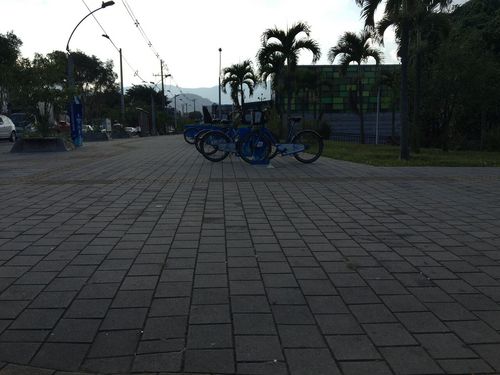
EnCicla station at Belen’s sports complex.
Sports and arts have helped shape a new city

Panoramic view of the pools at the Atanasio Girardot sports complex.
When I’m in Medellín, I spend a lot of time in sports facilities around the city. I see sports as having done an extraordinary amount of good for the city’s youth. INDER, the city’s sports and recreation department has engaged youth in some of Medellín’s most remote areas.
In 2010, Medellín hosted the South American games which overhauled some of the most dated facilities in the city, including most of the city’s official venues for soccer, track and field, swimming, baseball, softball, all types of skating, chess, tennis, and others.
Below is Medellín’s “coliseum” as seen from the Estadio Metro station. Within the green domes you can find different arenas that host basketball, volleyball, futsal, gymnastics, martial arts, and Olympic weight training among others.
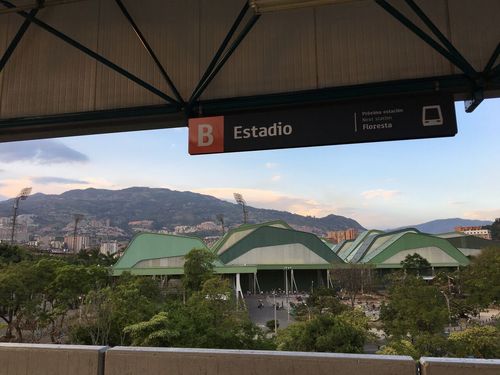
View of the sports complex from the Estadio station.
The soccer fields pictured below are just some of many of the city’s main sports complex, which hosts local, national, and international competitions in several sports (including ultimate Frisbee!)


The sports complex has been remodeled to include larger stands, a roof and offices on the upper level.
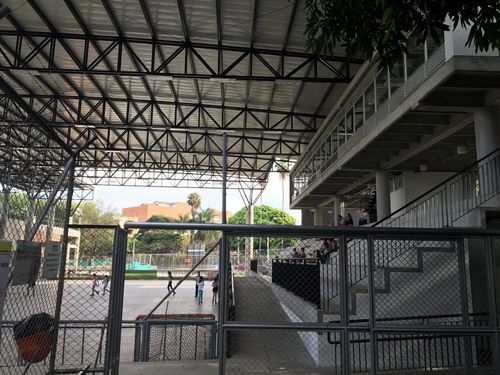
It’s also increasingly common to see pockets of urban space that have received the touch of local artistic talent. Many see painting murals as an alternative to violence and criminal activities for the city’s youth.
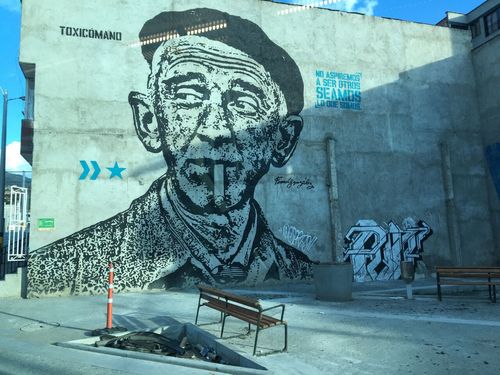
Street art is not only prevalent but high-quality murals are actively promoted by many city programs.
